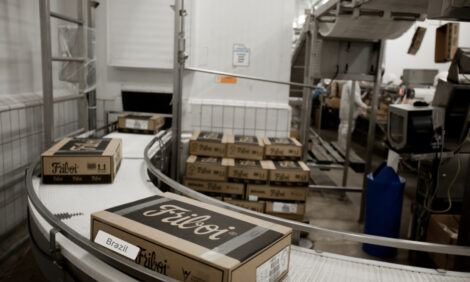



Grainfed Cattle Numbers Decline Further
AUSTRALIA - Difficult trading conditions for lot feeders continued to occur in the December quarter, with the Australian Lot Feeders’ Association/ Meat and Livestock Association survey recording a further 28,000 head reduction in cattle numbers on feed. Australian Lot Feeders’ Association (ALFA) President Jim Cudmore commented that “the reduction in cattle numbers on feed was experienced in all states (except WA) as declines in lot feeder margins and international competitiveness discouraged grain fed cattle placements”.
“Increases in the price of feeder cattle, a strong and less competitive Australian dollar against the US and grain prices significantly higher year on year (despite widespread rain induced downgrading of the winter crop) have all combined to negatively impact upon trading conditions”.
“With widespread rain and flush pastures experienced throughout the eastern seaboard, the market for suitable feeder cattle strengthened over the quarter due to restocker demand, the ability to finish grass fed stock at higher live weights and interrupted supply to feedlots and processors”.
“In contrast, the higher cattle on feed numbers in WA reflected the inability of grass fed producers to finish cattle with the normal summer dry spell extending their drought period”.
“For the December quarter, indicative feeder cattle prices averaged 14-17 per cent above the corresponding period in 2009 with domestic steers peaking at the highest level since February 2006”.
“Whilst heavy rain downgraded areas of the eastern seaboard winter crop (thereby increasing feed grain supplies), feed grain prices across the Darling Downs and Riverina nonetheless averaged 8-15 per cent and 9-26 per cent above the same period last year.
“Increased US competition in our major markets, assisted by a weak dollar compared to Australia, resulted in their beef imports increasing markedly”.
Meat & Livestock Australia’s Manager for Market Information and Analysis, Tim McRae stated that “Japanese and Korean imports of US beef for the quarter surged 43 per cent and 37 per cent, respectively year-on- year – with US trade to Japan the highest since the BSE induced trade ban in late 2003”.
“Australian grainfed beef exports to Japan during the quarter contracted two per cent year on year, whilst increasing 15 per cent in Korea over the same period”.
“The overall decline of two per cent into Japan for the quarter was due to a 13 per cent decline in chilled grainfed beef exports for the period, while the increase into Korea was due to strong consumer demand, especially for imported beef, and domestic slaughter levels tracking at historically low levels”.
TheCattleSite News Desk


